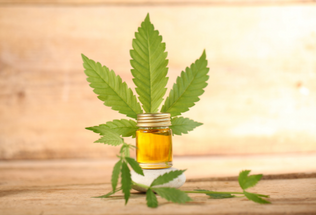Posted by Greg Collmann - Staff Writer on 15th Jun 2023
Hemp Distillate: A Journey from Plant to Product
Hemp is a versatile plant, used in industries as diverse as textiles, construction, and health products. In recent years, one use in particular has caught the public's attention: hemp distillate, a concentrated form of the beneficial compounds found in the hemp plant. Here's a peek behind the curtain, showing how hemp distillate is produced.
What is Hemp Distillate?
Hemp distillate is a highly concentrated form of the beneficial compounds found in hemp, namely cannabinoids, terpenes, and flavonoids. The most renowned cannabinoid is cannabidiol (CBD), celebrated for its potential therapeutic benefits. Unlike its cousin tetrahydrocannabinol (THC), CBD does not produce a "high" effect, making hemp distillate a popular choice for those seeking natural wellness benefits without psychoactive impacts.
The Journey from Hemp Plant to Distillate
The journey of transforming raw hemp into distillate is a complex and meticulous process. Here's a simplified walkthrough:
1. Hemp Cultivation: The process begins in the field, where hemp is grown and harvested. Quality is paramount; hence, hemp growers often use organic farming practices to ensure the plant grows in a pesticide-free environment.
2. Extraction: Once harvested, the hemp undergoes extraction to remove the desired compounds. This usually involves using a solvent (like CO2 or ethanol) to separate cannabinoids, terpenes, and other beneficial compounds from the plant matter.
3. Winterization: The crude extract then goes through winterization. This involves mixing the extract with ethanol and freezing it. This process separates the desirable oils and cannabinoids from fats and other plant matter that have also been extracted. The solution is then filtered, and the alcohol is removed using heat.
4. Decarboxylation: At this stage, the extract undergoes decarboxylation. This process involves heating the extract to activate the cannabinoids, changing them from their acidic form to their active form. For example, the non-psychoactive compound CBDA is converted into CBD.
5. Distillation: Next, the extract undergoes distillation, typically through a process called short path distillation. This process uses precise temperature control to separate cannabinoids based on their different boiling points. The result is a highly pure and concentrated distillate.
6. Refinement: The final step is further refinement, also known as post-processing. This can include additional filtration, removal of any remaining impurities, or further refinement processes to achieve the desired purity and concentration.
The Power of Hemp Distillate
The beauty of hemp distillate lies in the preservation of the plant's beneficial compounds during the extraction and refining process. By maintaining these compounds, hemp distillate ensures a rich profile of cannabinoids, terpenes, and other phytonutrients that can work synergistically, enhancing their individual effects—a phenomenon known as the "entourage effect."
Hemp distillate represents the apex of a plant's potential, bringing together the collective strengths of its individual compounds. It serves as a testament to the marvels of nature and the ingenuity of human technology.
In conclusion, the process of making hemp distillate is a complex, but fascinating journey from plant to product. As consumers, understanding this process is essential in making informed decisions about the hemp-based products we use and appreciate.
